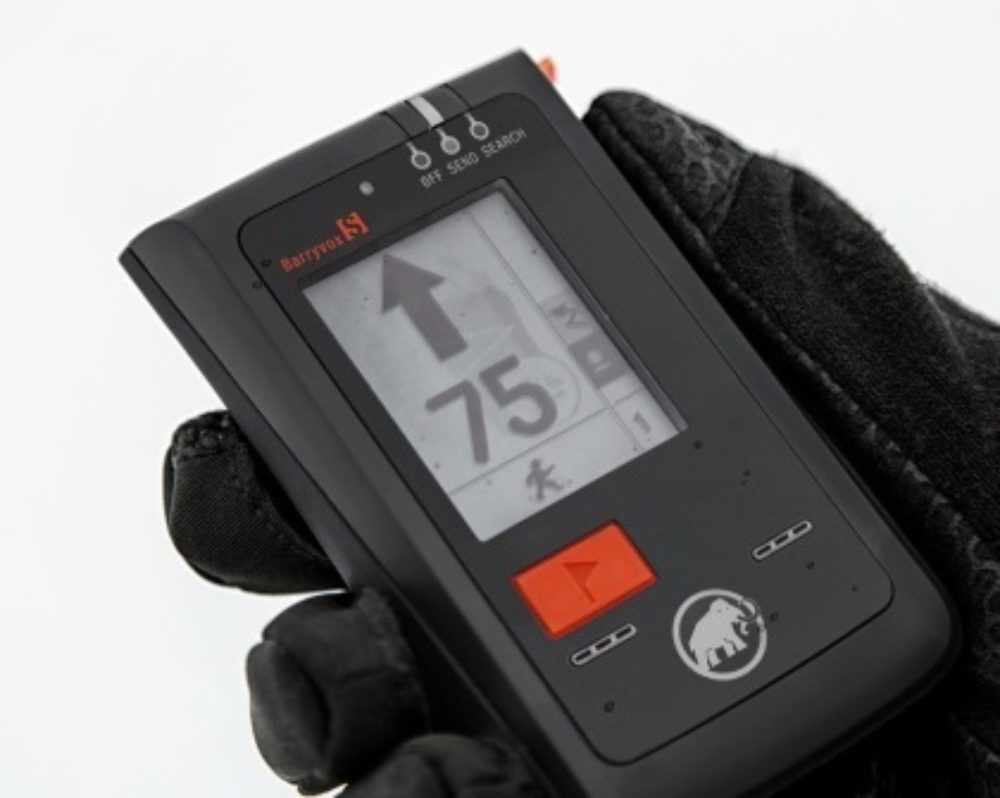Transceiver Group Check
Checking your transceiver and the transceivers of others in your group, before venturing out into avalanche terrain.

The transceiver is a critical piece of safety equipment when travelling in avalanche terrain. To find some one who has been avalanche quickly enough without the aid of these transceivers would be unlikely. It is therefore really important to check that everyone venturing into avalanche terrain has a working transceiver hence the reason for a transceiver group check at the start of the day. You may just want to check that every participant is transmitting so in this case a single group check should be performed, but at the start of the season or multiday tour it is important to check that the transceivers receive as well as transmit by doing a double transceiver check. There are certain human factors which can interfere with making a transceiver check such as racing to hit the powder asap and no one wanting to take the lead to organise the check. You will be surprised how often I have come across situations whereby the transceivers have just been forgotten to turn on, it is an easy thing to do. I would strongly recommend that someone in the group takes the initiative to make this check.
Single Transceiver Group Check
This is normal protocol and should be done at the start of the day. The transceivers should turned on when they are put on and be left on until you are finished travelling in avalanche terrain for the day. Don’t be tempted to turn your transceiver off over lunch to save batteries as you may forget to turn it on again. When checking the transceivers at the start of the tour, it is important to have a “gate” which is the person checking for everyone to go through to eliminate the chance of someone not being checked. You my need to find a quiet place if skiing off-piste in a resort. Most modern transceivers have a special group check mode which is very convenient over wise you will need to put the checking transceiver into receive mode. The participants then pass the checker, one at a time, in isolation (3m apart minimum) to pass 1m away from the checking transceiver. Wait to hear 5 beeps as a minimum with 1m distance between the transceivers (normally an arm’s length). You should make sure that the distance shown on the checking transceiver corresponds to the distance between the transceivers so to eliminate any transmission interference (see below). Note that unless you have a spare transceiver the checker must go from check/search mode to transmit which is an inherent weakness in the system.

Transmission Interference
Metallic objects (phones, radios, gps, pocket knives, foil wrappers etc.) should be kept at least 20cms away from the transceiver when transmitting as they will absorb the transmitted radio waves and weaken the output by up to 50%. This would mean that the transceivers transmission range is halved and you could be missed in the signal search. Check with jackets closed so that a metallic object in the jacket pockets are not later placed close to the transceiver when it is closed. It is possible to detect an affected transceiver as the control transceiver will have to move closer to the transmitting transceiver to keep the same 1m reading. Transceivers such as the Mammut Pulse will only give a positive beep at 1m distance so if you are 50cms away there is probably a metallic object (phone, on or off) close to the transmitting transceiver. It is very important that in search mode metallic objects (probes, shovels etc.) should be 40cms away (in rucksack or behind) as they will interfere with the searching transceiver.
Double Transceiver Group Check
This is to test whether the transceiver can receive as well as send. This is normally done at the start of a multiday back country tour or when high level of risk management is needed. The ski patrollers at La Grave always do a double transceiver group check when assessing to see if they will open the resort. Efficiency and thoroughness are important here. You do need a bit of space as all but the leader must stay at least 3m away from each other so that their transceiver can be uniquely identified. All participants except the “leader” go into search mode and pass the leader who is transmitting about 1m away so that they can test the search mode on their transceiver. When everyone has passed, they all go into transmit mode except the leader who goes into search mode. The leader then passes all the participants who should be at least 3m apart to check that they are transmitting and that the leader’s transceiver can search. The leader then ends up at the front of the group ready to find a safe passage.

Transmission Interference
Metallic objects (phones, radios, gps, pocket knives, foil wrappers etc.) should be kept at least 20cms away from the transceiver when transmitting as they will absorb the transmitted radio waves and weaken the output by up to 50%. This would mean that the transceivers range is halved and you could be missed in the signal search. Check with jackets closed so that a metallic object in the jacket pockets are not later placed close to the transceiver when it is closed. It is possible to detect an affected transceiver as the control transceiver will have to move closer to the transmitting transceiver to keep the same 1m reading. Transceivers such as the Mammut Pulse will only give a positive beep at 1m distance so if you are 50cms away there is probably a metallic object (phone, on or off) close to the transmitting transceiver. It is very important that in search mode metallic objects (probes, shovels etc.) should be 40cms away (in rucksack or behind) as they will interfere with the searching transceiver.
Terry Ralphs - ISM Director
Related News Articles

Getting Into & Developing Your Climbing
Indoor bouldering is a great place to start if you want to try climbing for the first time. You can…
Read Article
Petzl 'Alpen Adapt' Crampons
A quick look at the Petzl crampons that I'm using at the moment, and how you can very easily mix…
Read Article
Petzl Crampon Compatability
Mix & match the different Petzl crampon sections, to create the best fit for your boots, and adapt to each adventure.
Read ArticlePrussiking Up A Rope
Following the recent articles around crevasse rescue and snow belays, I wanted to finish up by outlining a standard technique…
Read Article



